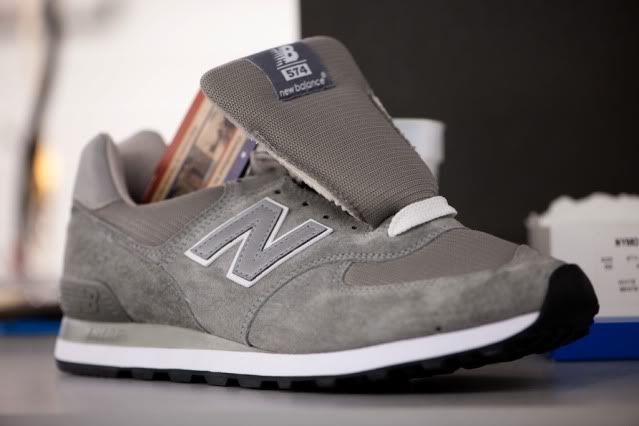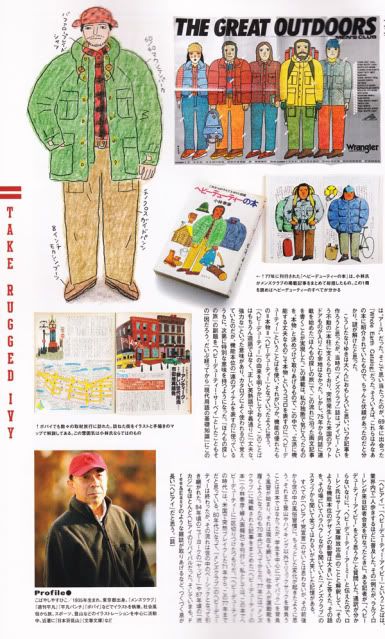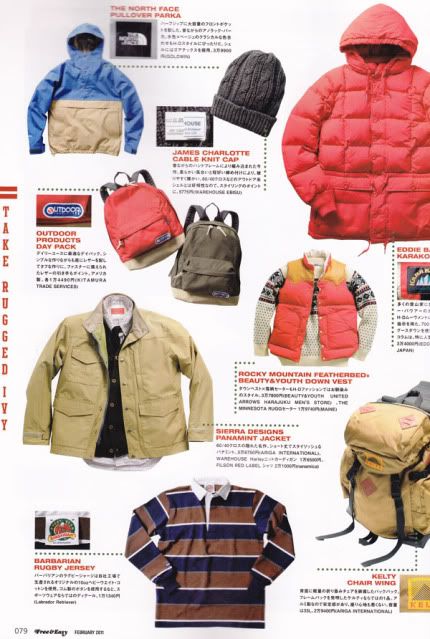I hurt my foot two days ago. I was running down a Pennsylvania rural road, with a steep incline. I heard a pop and now my foot hurts. Hopefully it’s nothing bad because I have NCAA Div. III regionals in a week and a half and missing that would be awful. So I’m icing and taking care of the swelling in hopes that it feels better. To help with this process, I’m exclusively wearing my New Balance 574s: it’s like wearing a pillow for your feet. I tried to wear my beater bucks but they weren’t doing it for me. As I frump around campus, my New Balances got me thinking about a previous post I did a while back. New Balances certainly have an early 90s charm to them. As the aging discovered that wearing cheap dress shoes is more uncomfortable than they remembered, New Balances certainly gained customers. As shoulders sagged so did sportcoats and as dogs replaced children, duck cloth pants replaced clean flannel trousers. Clothing of the frumpy lacked what Italian menswear has brought back: sexysex.
Italian tailoring is a beautiful thing. When people claim that it’s a perfect blend of elegance and utility, they aren’t joking. A breathable, soft, and well-fitting blazer is easy, tasteful and is very popular among the new Anglo-Italian style overmen. The form-fitting, tapered-leg celebrates the human figure and doesn’t try to make the human body look like something it’s not. The tailoring allows men to look relaxed and natural, not stiff and artificial. Scared boys aren’t forced into a suit for alpha-males. The come-as-you-are is sexual in manner; it’s fun, loose in feeling, and doesn’t try to hide a thing. So, yes, the new tailoring is sexysex: a blend of utility and aesthetic.
The tailoring has the new balance of ideals that romantic comedies have been promoting for the past twenty years: little-thought necessary clothing balanced out by its own graceful appearance (which is similar to some compromise between two opposites that they always make in romantic comedies). Reasonable human beings will gravitate to this sort of thing. Those who take the time to learn and study the craft of dressing themselves will appear as though they care about greater things than dressing in the morning, which is a trait that is desirable in our society. Vanity is frowned upon as is dressing like a bum. However, does it not require vanity to not dress like a bum (when everyone else dresses like a bum that is)? Anglo-Italian tailoring attempts to address this problem.
I reject this balance. I am not a reasonable human being. I am a Daniel Plainview of menswear: minus the whole ‘power at all costs’ thing. I am the ‘frump’ and no tassle-loafer can change me. The idealism of frump isn’t sexy at all: it’s old and resembles a plastic trash bag. Sweaters, boots, jeans, parkas, ball-caps, and khakis float my boat. I like my blazers with lots of pockets and fitting loosely like a chore coat. I prefer loose sweater weaves to fine gauges. I like my kicks clunky and unwieldy, like John Candy in a role other than a fat man. It would seem that this style has no balance, just utility. Mister Crew posted Free & Easy scans a while back that sum just about everything up. Utility is everything, so perhaps I’m more of a Stuart Mill than a Plainview. I am the kid trucking through muck at 6:30 a.m. and I am the kid going to the rope swing on a hot summer day. I demand utility.
Or is this really the case? Wouldn’t running tights and shorts serve me better than grease-stained chinos on a cold winter morning? Wouldn’t a pair of Merrel’s serve me better as shit-kickers than a pair of bucks? Ok, utility cannot be the only influence on the way I dress. Aesthetic has some play in the matter. But what’s the balance? I’d argue that on a utility and aesthetic graph, we’d see a shape very similar to an indifference curve; with Anglo-Italian tailoring being near where the curve is closest to the origin – the sexysex sweet spot. Aesthetic, such as YSL leather jackets and Prada Creepers, would be on the y-axis and utility, such as Bean Boots or Levis denim, would be on the x-axis. Your style can fall anywhere on this curve. Just know that there are opportunity costs with any movement along the line. As you get either more utilitarian or aesthetic there are diminishing returns: such that if your style attempts to become more aesthetic when it already has a steep tangent line, then to get more aesthetic you will have to give up more utility. For example, if you had a flatter tangent line and wanted to become more utilitarian, something like a cheesy hiking boot gives up a lot of aesthetic for just a little more utility when something like a pair of desert boots would suffice for your lifestyle. Of course, the indifference curve is different for each person given different lifestyles. It should be noted that the units of this curve should not be interpreted as units of aesthetic and utilitarian clothing you have. If this were so, the graph would make little sense because if you had a wardrobe full of exclusively aesthetic pieces and exclusively utilitarian pieces and wore them together then this would balance out to where Anglo-Italian tailoring now sits. Mixing random aesthetic and utilitarian pieces would certainly not occupy this spot; it would just look dumb. In short, it is your style and not your items that occupies a spot on the graph. Of course, your items do contribute to your style. The day you wear your Red Wings is a day you can’t wear your Allen Edmonds. The day you buy a coat is the day you can’t buy some jeans.
My frumpy isn’t sexy. It’s boxy and resembles Sweetums. The Heavy Duty Ivy aesthetic (though it would be closer to the utility axis rather than the aesthetic axis) is an Augustine of menswear. There’s nothing wrong with that. It’s a side effect of utility. I was attracted to false laceration as a youth anyway. I do not value the sexiness of menswear enough to give up my 574s. I enjoy the padding protecting my foot and floppy flannels that don’t hug me closely. Ties and slick blazers feel out of place in most college classes and I don’t get good enough grades to aspire to be an Anglo-Italian overman; the tailoring would be too much into my own fantastical self-reflection. Becoming oneself has influences of das Man. You must swing your balance outside of your own fantasy world and consider the world of context you have been born into. Balance the two and you’ve achieved something that I believe many of us are working towards.
I’ve identified my self with Heavy Duty Ivy but I believe that this person has not become a metaphysical ideal of my self. My self will be influenced from my inner and the outer and will change over time. This ideal of changing self (the term for this in menswear is ‘wardrobe’ which is seriously fucked up and material) is nothing new. We’ve seen it as we start as young adults in middle school, come out with a changed perspective as a grown adult, and gain a new perspective as we enter old age. I claim that your wardrobe indifference curve changes over time: you come to appreciate different things on your body. But I also claim that the collective menswear indifference curve changes over time. The point closest to the origin will change from Anglo-Italian menswear to something new and unknown over time. New overmen will appear sometime in the future to move Anglo-Italian tailoring aside as the center of the curve and replace it with a new perspective on menswear: a new set of morality.
So what did you learn from reading this? If lucky, you learned nothing.
Just for good measure: sexysex.





Regionals? Do you run XC? If so, I applaud you my friend. I run track for a small D1 school. Props for the runner/blogger duo.
ReplyDeleteYou heard a "pop"? You should probably get that looked at. Even if it is nothing, you will heal faster knowing that for sure.
ReplyDeleteFor classy utilitarian, I dig what Old Town is doing.
Thhis was lovely to read
ReplyDelete